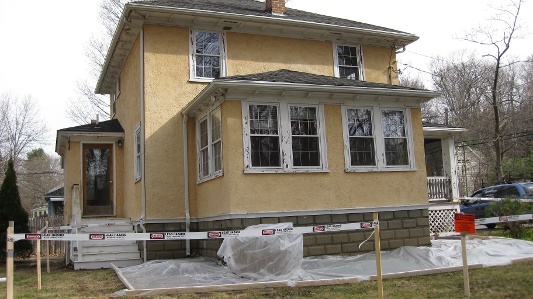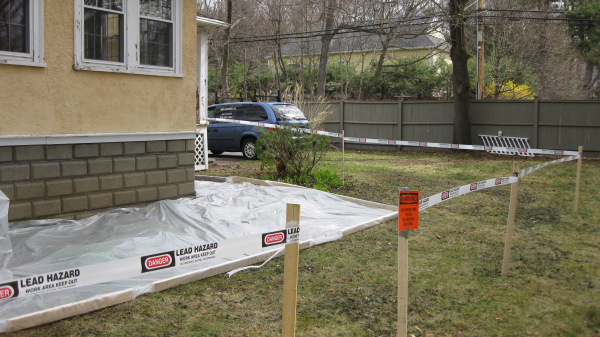
When I bought my 1929 American Foursquare home in Massachusetts, I didn’t think much about lead paint. It wasn’t chipping on the window sills – and, anyway, my kid would never eat paint chips! Over the ten years I lived there, I scraped and painted the entire interior myself — at least once.
Fast forward 12 years. I have moved to Maine and, after renting out my Massachusetts home for a few years, and realizing that being a long-distance landlord is not all it’s cracked up to be, I’ve decided to sell. After a few years of renting and some harsh New England winters, the interior looks tired and the exterior trim is chipping like crazy.
“Be careful!” my realtor said after visiting my house and seeing the chipping paint. “ A family in Concord just got sued because the child of a family they were renting to got lead poisoning.” Uh oh. All the horror stories I hear from our clients here at LeadSMART Training and the RRP class I attended came flooding back.
When you disturb lead paint, the tiny particles become dust, fumes, and vapors – which are extremely dangerous. They cause everything from learning problems, ADD and ADHD to brain and nervous system damage in children and kidney, brain, blood and nervous system problems in adults. Children and pregnant women are particularly vulnerable, and dust from someone’s clothing can cause irreparable damage.
My realtor sent her painter over to give me a bid and I discovered he was not RRP certified. If an inspector happened to notice the ladders as he drove by my house, which is right on Main Street, or a nosy neighbor decided to investigate, I could be in big trouble. And what if a potential buyer wanted to know how the work was done? If I have learned anything since I began working at LeadSMART, it’s that it’s better to be safe than sorry — you can’t un-poison anyone.
LeadSMART President Peter Lawton explained that a homeowner doing work in a primary residence does not have to be lead certified, but does need to follow lead law practices. Someone like me, who is using the home as income property, either has to be lead paint certified herself or use a painter that is RRP certified (also called a Certified Renovator) as well as use a company licensed to work in lead paint homes in the state the home is in.
Luckily, two of our LeadSMART instructors, Scott Spyropoulos and Fred Ellsworth, own and operate a third-generation painting company, Designs with Color, in Massachusetts. They gave me a fair quote and I felt relieved that the work would be done properly and according toMassachusetts law. Hiring a certified contractor doesn’t have to cost an outrageous amount more but it certainly does add value.
When we drove down to clean out the basement and garage, the exterior RRP painting job was in full swing. I felt confident when I saw the signs and taped off areas. My painters — your instructors — Scott and Fred don’t just Talk the Talk, they definitely Walk the Walk.
Now with the project complete, the house is back to looking like the jewel she was when I first bought her. I feel great knowing that I acted legally compliant, but the even greater feeling is knowing that my choices prevented any painter, his family, or future owners of this jewel from being poisoned. The cost of this peace of mind? Priceless.
-Kirsten Read
